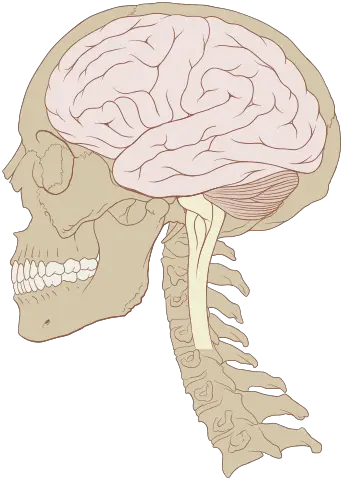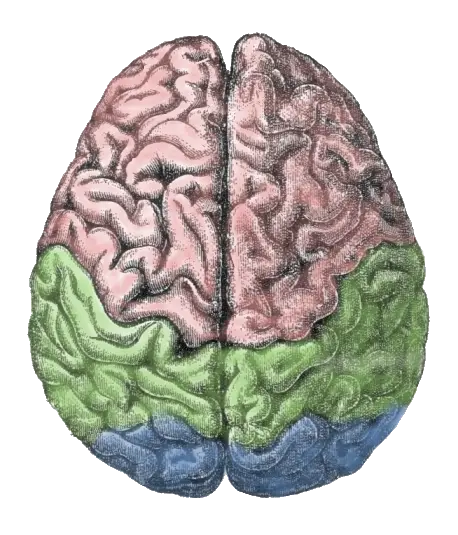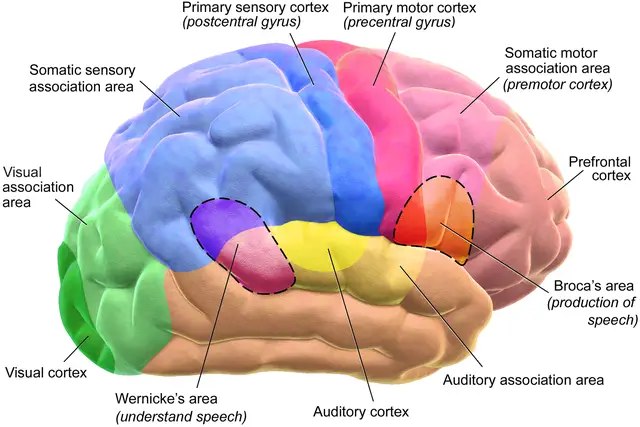Humans are the most complex and advanced organisms on Earth. The organ that is most responsible for this achievement is the brain.
The brain is a three-pound organ that, as you know, is found in the skull. It processes information through the five senses. It allows us to have memories, feel emotions, move our bodies, and communicate with others.
Parts of the Brain
There are three major parts of the brain: cerebrum, cerebellum, and the brainstem.

The cerebrum is the largest part of the brain. It is made up of two hemispheres and controls most of the higher thought processes. These include speech, vision, hearing, learning, emotions, and fine motor movement.
The cerebellum is located just beneath the cerebrum. It controls larger motor movements and maintaining balance.
The brainstem connects the cerebrum and cerebellum to the spinal cord. It controls things that you never think about – like breathing, your heart beat, and digestion.
Left Brain vs. Right Brain
Your brain has two hemispheres. Each hemisphere controls the movement for the opposite side of the body.
The two hemispheres need to talk to each other. To do that they communicate through the corpus callosum.
Most of what you may have heard about being “right brain” or “left brain” is false. Everyone uses both hemispheres of their brains. Certain hemispheres focus more on some tasks, but you would have a very difficult time completing anything if your hemispheres couldn’t communicate with each other.
The Lobes
In addition to hemispheres, the cerebrum is also organized into different lobes. These are the “folds” in the brain.
Each hemisphere has four lobes: front, temporal, parietal, and occipital.
Like the brain’s hemispheres, the lobes are responsible for specific tasks, but they all work together.
Some of the lobes’ responsibilities are:
- Frontal – intelligence, judgement, and behavior
- Temporal – language and memory
- Parietal – spatial perception and pain recognition
- Occipital – vision

The Cortex
The surface of the brain is called the cortex. You may hear people also refer to it as grey matter.
The cortex contains many nerves that handle the brain’s complex thoughts. In order to fit as many nerves as possible onto the brain, the cortex has folds that increase the surface area of the cerebrum.
White Matter
The cortex is a very important part of the brain, but it is what beneath the cortex that allows it to work properly. This section of the brain is called white matter.
There are several parts of the brain that make up white matter. They are: hypothalamus, pituitary gland, pineal gland, thalamus, basal ganglia, and the limbic system.
The hypothalamus is deep inside your brain. It controls some of your basic behaviors like hunger, thirst, and sleep. It is also responsible for your emotions and hormones.
The pituitary gland is located at the base of the skull. It is connected to the hypothalamus and is responsible for the hormones that allow humans to mature into adults.
The pineal gland is responsible for your sleep cycle. It does this by secreting a hormone called melatonin.
The thalamus is responsible for much of the information that comes and goes from the cortex.
The basal ganglia are a collection of nerves that cover the thalamus. They are responsible for fine motor movements, like those that your fingers make.
Several parts of the brain make up the limbic system. This system is responsible for much of the brain’s learning, emotions, and memory.

Interesting Facts:
- The brain is about 2% of an average human’s weight
- The cerebrum is 85% of the total brain’s weight
- The cortex contains 16 billion neurons
- The word cortex comes from the Latin for “bark”